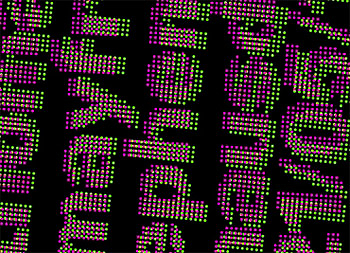In Jürgen Habermas' formulation, the museum exists as the construction of historical memory, curator Harald Szeemann talks of "collective memory" and Michel Foucault reflects on the museum as a locus of bourgeois self-reassurance. As early as 1925 Alexander Dorner, Director of the Landesmuseum in Hanover, imagined the museum as a "laboratory" and "power station", and in 1961 architect Cedric Price in London conceived a vision of a dynamic institution, the "Fun Palace", a building defined by exchange, by the capacity to change and transform itself. These diverse proposals continue to drive discussions within the museum world on the identity of an art institution. In this context, curator Hans Ulrich Obrist likes to cite artist Douglas Gordon's assertion that art should not be an object, but instead an excuse to have a dialogue.
Communication is an existential pre-requisite for a dynamic institution and the crucial notion that information should be shared is the driving force shaping complicities between graphic design and programmers in the realm of art. It is all about publicising and presenting content, not simply advertising, seducing, concealing the audience. The Haus der Kunst has taken up the challenge of an experiment in complicity, taking advantage of the flexibility the Haus der Kunst enjoys in contrast to a museum presenting a permanent collection.
In 2003 Thomas Mayfried developed the current graphic look for the Haus der Kunst, and is still intimately involved in. The exhibition "Thomas Mayfried. Ephemera. Graphic Design etc." in the Haus der Kunst aims to turn the spotlight on the design process: it presents the overall design scheme devised for the Haus der Kunst, taking blueprints, including unrealised works, and a selection of printed material as the point of departure for the show. In addition, the presentation seeks to render visible the "archives imaginaires", the visual memory of the photographer and graphic designer. In the process, the show seeks to reflect on design strategies: a visual essay, consciously opting not to attempt an exhaustive presentation of graphic design history, but instead to create a series of chains of association, springing from idea to idea, establishing connections between conceptual art, photography and graphic design. Works by, inter alia, Otl Aicher, Daniel Buren, Marcel Duchamp, Hans-Peter Feldmann, Dan Graham, William Klein, Alexander Rodchenko, Dieter Roth and Piet Zwart will be on display in the exhibition. The originals will be unfurled: the formats, the haptic dimension, the materials, the printing techniques are significant. The exhibits are books, postcards, stamps, posters, adverts: ephemera.
